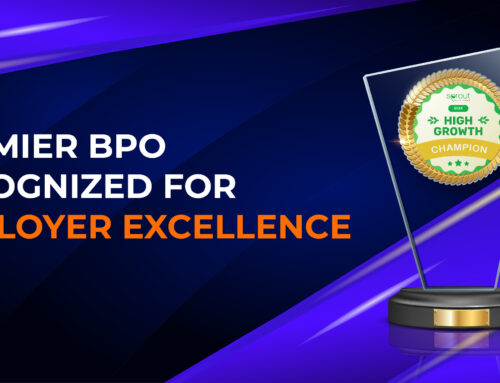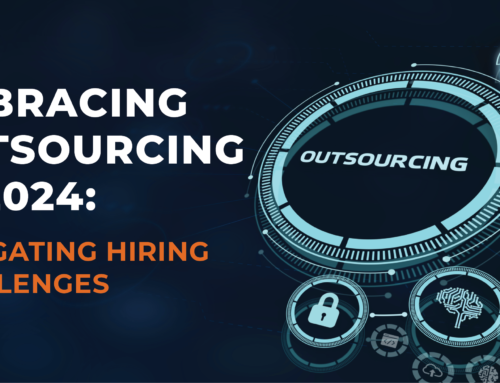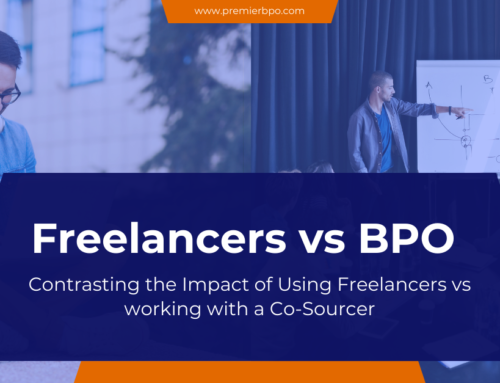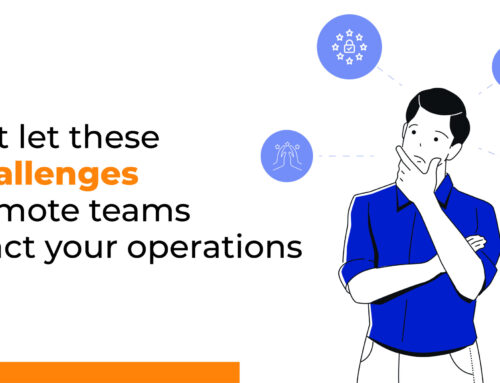Both terms refer to various business functions performed within an organization, but to understand the difference between Front-office and Back-office in a BPO, we must first define what does ‘BPO’ stand for? Business Process Outsourcing refers to subletting non-core business activities and operations to a Third-Party organization, which were previously performed by an in-house team.
These operations consist of all the tasks carried out within a company by its workforce, with the difference between front office and back office defined by the nature of the functions executed. There is also the concept of outsourcing middle-office services that abridge the functions of front office outsourcing with back office outsourcing.
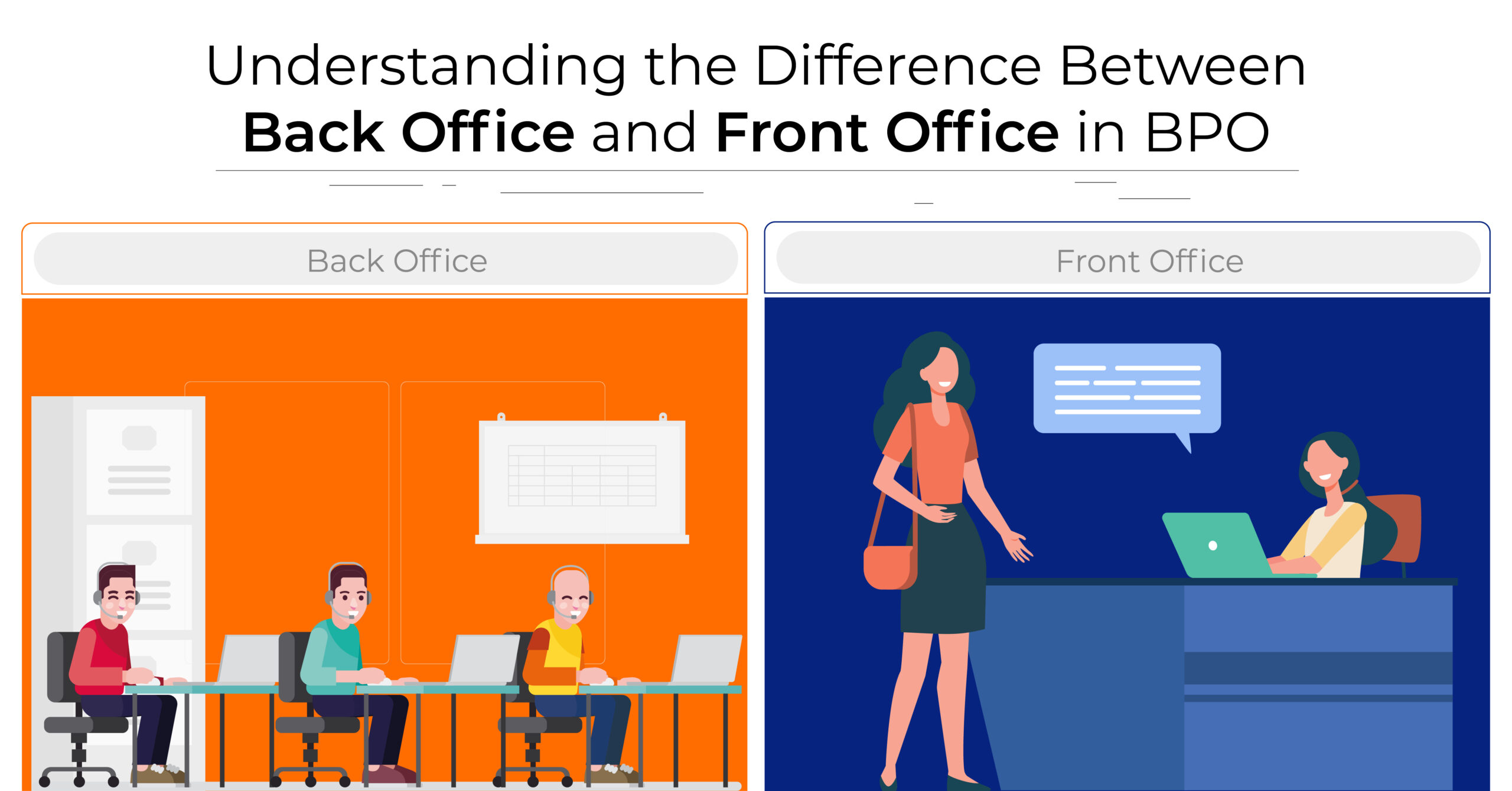
“Do what you do best and outsource the rest” – Peter Drucker.
TYPES OF OUTSOURCING AND WHY THEY MATTER:
Outsourcing back office functions has become an intelligent business strategy over the decade, which is now a differentiator for most companies, especially in an economic and talent crisis. When you outsource to typically low-cost international locations with additional redundancy; it is called offshoring. Contracting to regions nearby for cost reduction or talent expansion is termed nearshoring. Contracting out in the same country but other states is called onshoring. Each has its benefits, but the idea of having an externalized team immerse themselves in your company culture and act as your extended team remains the same.
More for you: What is the difference between Offshoring, Nearshoring, and Onshoring?
Where and how you choose to outsource will also affect your front-office or back-office operation. When onshoring, time-zones and culture are similar, while when nearshoring time zones may differ by a few hours, but cost of operations is often lower than in-house. Offshoring back office service solutions serves the greatest advantage in terms of cost-efficiency, access to larger talent pool, geographical expansion, and redundancy.
WHAT IS THE DIFFERENCE BETWEEN FRONT-OFFICE AND BACK-OFFICE OUTSOURCING?
Since a BPO firm handles a vast array of everyday business operations, sometimes the roles of one division may intertwine with the other, especially where middle office operations are involved. Both divisions of the Front and Back office have a set of functions that together create a well-oiled machine; neither can function without the other. Although traditionally the differences between each were defined, modern-day disruption and business trends are causing some functions to merge for amplified results.
What is Front Office Outsourcing?
The Front-office BPO, simply put, consists of all the customer-facing operations within a company, or personnel who act as representatives of the company to the client base. For example, Sales Management or CRM handling at a Contact Center. People in these roles may be directly responsible for generating revenue for a company while also dealing with client feedback. That is why these types of roles require excellent communication skills, product/service knowledge, and an in-depth understanding of what the consumer wants. Front Office services in a BPO may comprise of:
- Customer Care
- IT Enabled Services like Technical Support, Help Desk / Service Desk Support
- Sales and Marketing
- Public Relations and Scheduling
- Contact Center Services, Inbound/Outbound Calls
Some examples of front office duties and responsibilities include:
- Gathering information
- Creating new accounts
- Setting up meetings
- Addressing customer concerns
- Order Management
What is Back Office Outsourcing in BPO?
Back-Office functions within a company consist of the non-customer facing or administrative tasks. Although there is no interaction between back-office employees and customers, the Front-office is reliant on back-office processes to run smoothly in the background and ensure overall good performance. For example, internal functions like Human Resources and Accounts Management. Back Office roles require strategic thinking, operational decision making, everyday management, and aim at reducing overall operational costs. Outsourced Back Office services may consist of but are not limited to:
- Payroll and Accounting
- Data Management Services
- Software/ Web Development and Testing
- Quality Assurance and Reporting
- HR and IT functions
- Compliance and Manufacturing
- Content Management and Creation
- Administration
- Claims Processing
Some examples of back office duties and responsibilities include:
- Research, Data Entry, Indexing, Conversion, Processing, and Management
- Credentialing, Compliance Management, and Record Keeping
- Financial Analysis, Auditing, and Reporting
- Accounts Payable/Receivable, Claims, Billing, and Payment Processing
- Invoicing and Case Management
- Asset Management, Projections, and Budgeting
- Email/Web/Chat Support
- Software/Database Development and Quality Engineering
- Remote Monitoring and Management
- Risk Assessment
- RCM, ROI, and CRM Management
What is Middle Office Outsourcing in BPO?
The middle-office connects the front-office and back-office functions together by ensuring smooth coordination, risk management, and performance analysis across the entire operational framework. It deals with both customer-facing and non-customer facing roles sometimes. Middle office outsourcing plays a vital role in maintaining a seamless flow of operations and information between the front office and back office in a BPO setup. It encompasses a range of critical functions that support the overall efficiency and effectiveness of business processes. Middle office services in BPO may include:
- Trade Execution, Resources, and Risk Management
- Compliance Monitoring and Regulatory Reporting
- Portfolio Management and Performance Analysis
- Data Analysis and Reporting
- Process Optimization and Efficiency
- Stakeholder Interaction and Relationship Management
- Quality Assurance and Control
Examples of middle office duties and responsibilities in BPO may include:
- Verifying trade data and transactions
- Monitoring and managing risk and compliance with regulatory requirements
- Implementing decision support and risk control measures
- Collaborating internally and externally to support operations
- Analyzing performance metrics and generating reports
- Identifying bottlenecks and implementing process optimization strategies.
Understanding The Difference Between Back Office Vs Middle Office Vs Front Office
Most operations nowadays overlap due to the functional similarities, but some distinctions remain. Back-office operations are mission-critical and support the Front-end at all times. Some actions may overlap falling under Middle Office functions; but with the passage of time and technological advancements, the barrier between the two is diminishing. Below is a general comparison of how Front Office, Middle Office, and Back Office tasks differ:
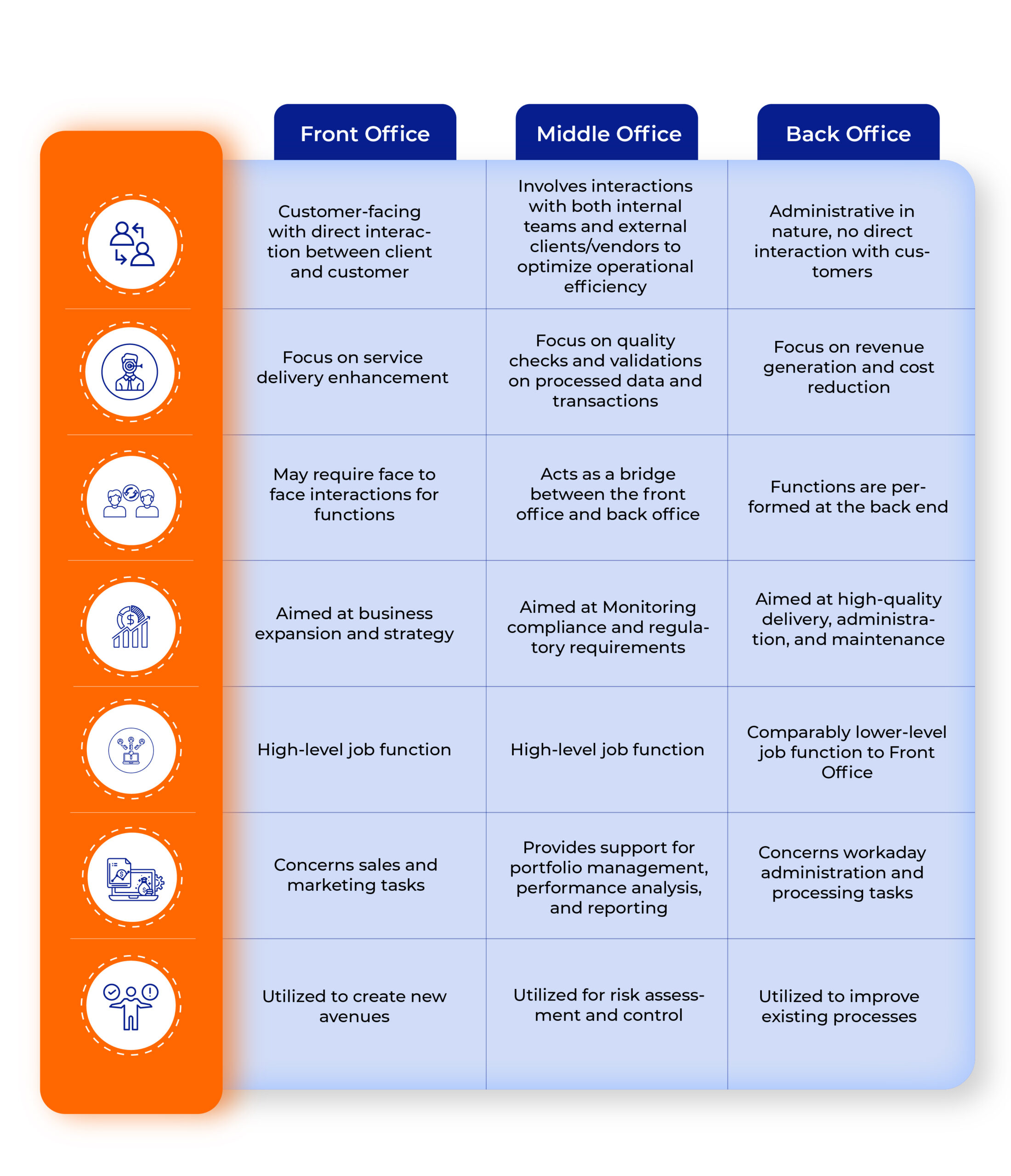
Premier BPO Business Processing Lifecycle:
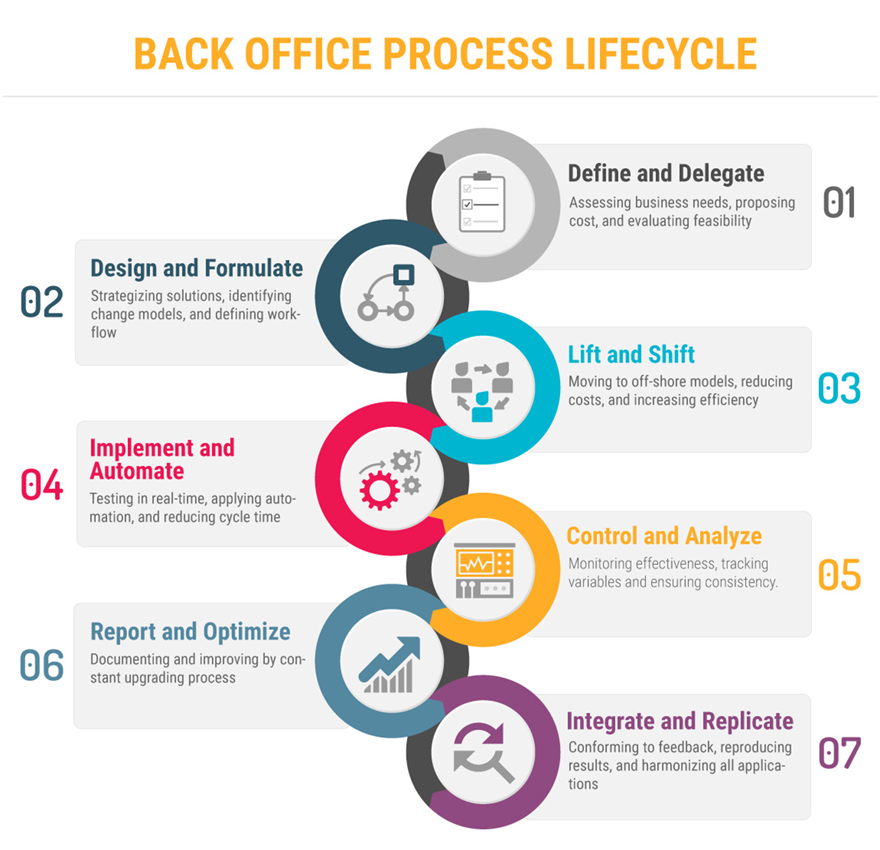
Taking Business Process Outsourcing a step further with tailored service, Premier BPO’s Back Office Process Lifecycle enables flawless integration, application, and implementation of any outsourced process in any client system. This seven-step approach allows continuous process improvement in every business cycle. Our focus is long-term sustainable relations, expedited by our client immersion culture, where we turn our Back Office into the client’s Front Office. When outsourcing with an external organization, compliances with industry standardizations and regulations are vital. All Premier BPO services and platforms comply with ISO, PCI DSS, SOC Type II etc.
 Skip to content
Skip to content

